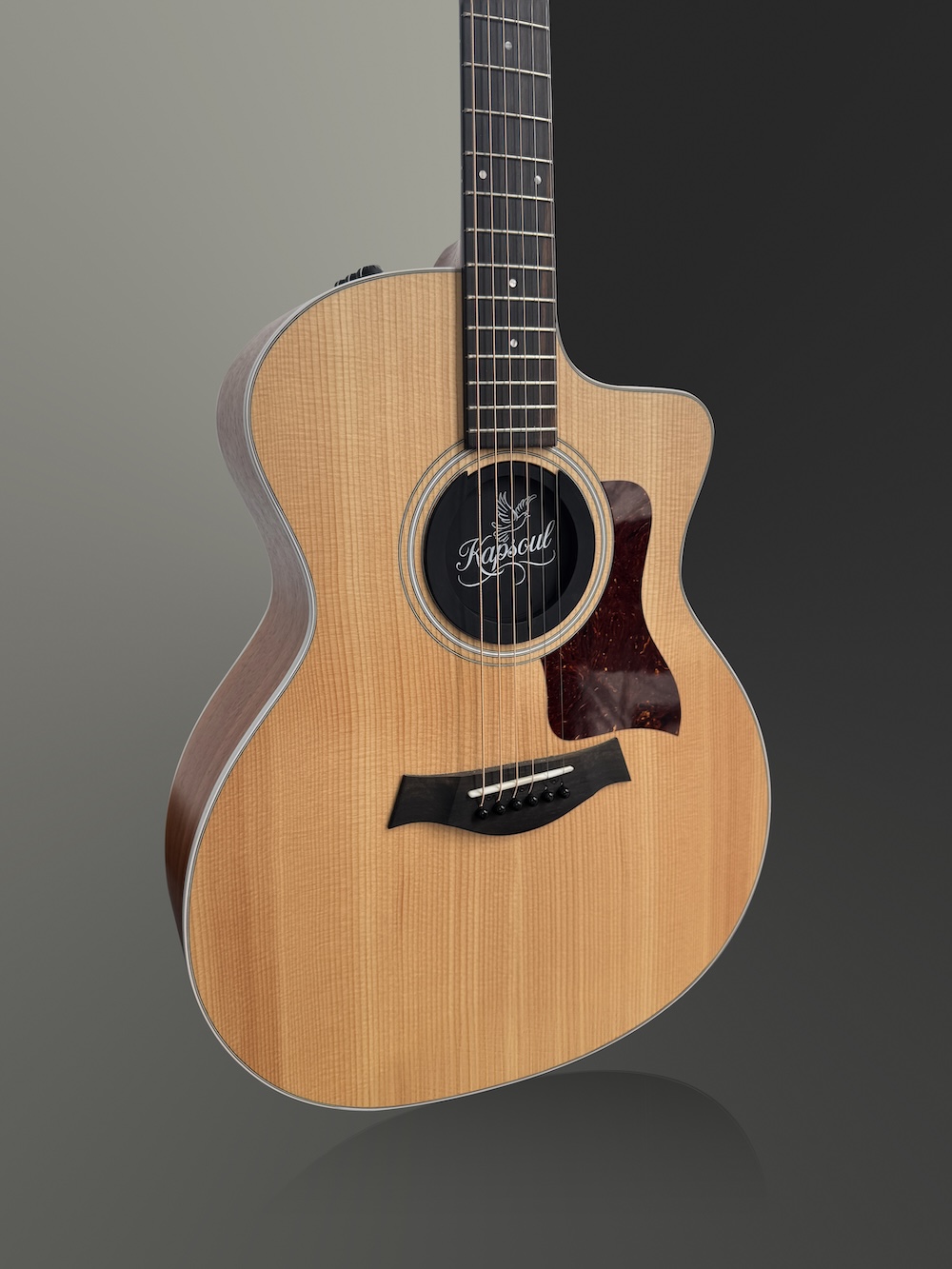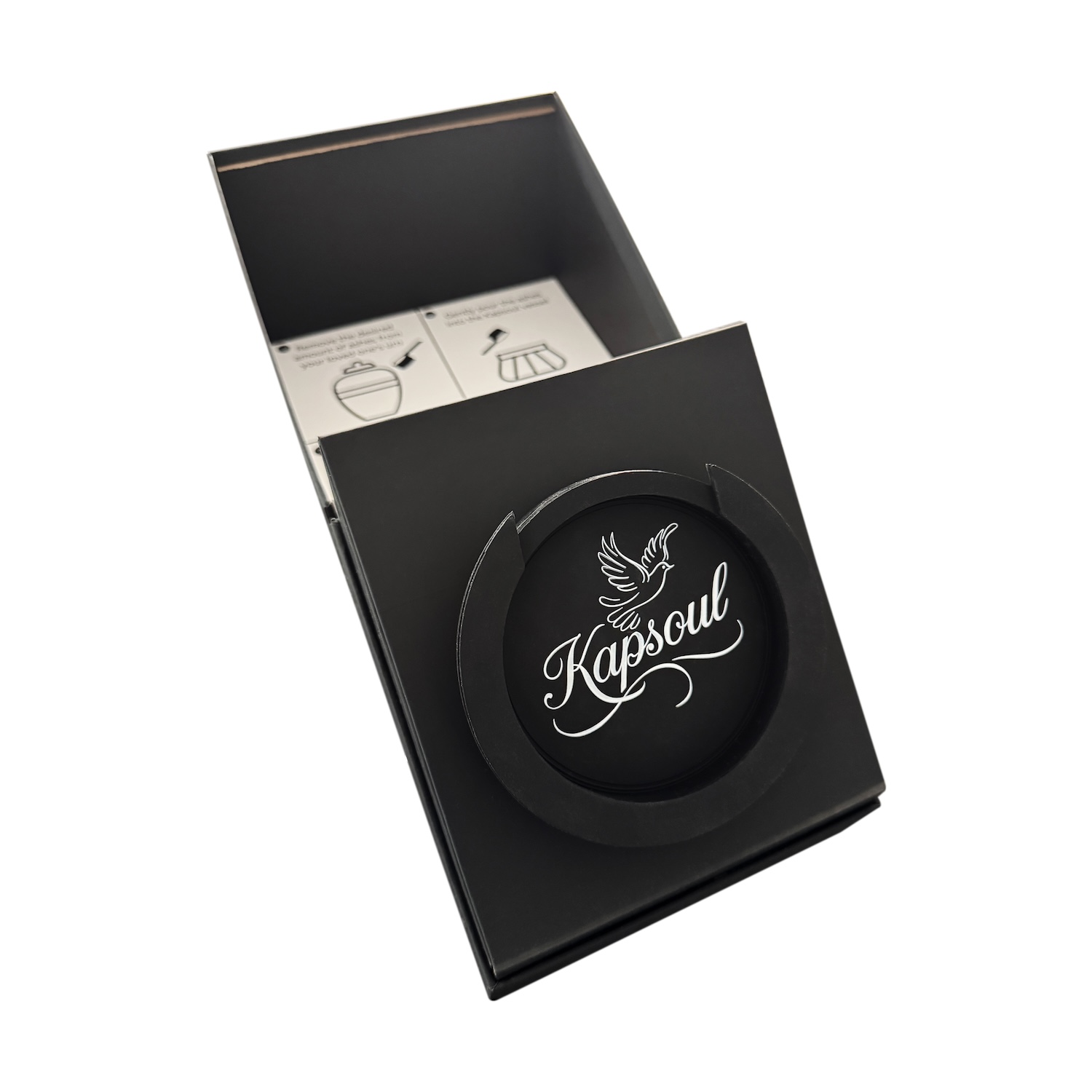When words fail to capture the depth of our pain, music steps in as our most honest language. Over my three decades of teaching guitar, I’ve watched countless students discover that improvisation offers something no structured lesson plan can provide: a direct pathway from heart to sound. Just as music transforms emotion, custom urns for ashes offer a personal touch in commemorating a loved one. Grief carries emotions too complex for predetermined melodies, too raw for memorized chord progressions. It demands something more immediate, more authentic—it demands improvisation.
The guitar, with its six strings and endless possibilities, becomes our emotional translator during life’s darkest moments. Through improvisation, we don’t just play music; we excavate feelings, explore loss, and gradually transform pain into something beautiful. For those who’ve integrated KapSoul into their acoustic guitars, this process takes on even deeper meaning as the physical presence of loved ones participates in every note, every silence, every emotional breakthrough.
Understanding Grief’s Musical Language
Grief speaks in dissonance before it finds resolution. The traditional major and minor scales that define most Western music can feel inadequate when processing profound loss. Blues scales, with their bent notes and emotional ambiguity, often provide better emotional vocabulary for expressing what loss feels like.
The pentatonic minor scale becomes particularly powerful for grief improvisation. Its five-note structure removes the complexity of full scales while maintaining emotional depth. Start with the Am pentatonic (A-C-D-E-G) in fifth position and let your fingers find the pain points—literally. Press harder on certain notes, bend the G string slightly sharp on the 8th fret, and notice how physical tension translates into emotional expression.
Modal improvisation opens additional emotional territories. Dorian mode, with its slightly raised sixth degree, creates a melancholy hopefulness that mirrors the complex emotions of missing someone while celebrating their memory. The A Dorian scale (A-B-C-D-E-F#-G) over an Am chord progression provides rich harmonic possibilities for exploring both sadness and acceptance.
Building Your Emotional Vocabulary Through Technique
Improvisation techniques take on new significance when channeling grief. String bending becomes about stretching toward something lost, while vibrato represents the trembling vulnerability of raw emotion. Palm muting creates the muffled quality of tears, and harmonics touch on the ethereal connection we maintain with departed loved ones.
Fingerpicking patterns offer intimate conversation with memory. The Travis picking pattern, with its alternating bass notes and melody lines, creates internal dialogue between present reality and remembered presence. When combined with KapSoul’s memorial function, this technique literally involves your loved one in musical conversation as vibrations move through their resting place.
Slide techniques add another layer of emotional expression. Using a glass or ceramic slide, you can create smooth transitions between notes that mirror the fluid nature of memory—how thoughts of lost loved ones slip between joy and sorrow without clear boundaries. The sustain and microtonal possibilities of slide guitar speak to emotions that exist between standard pitches.
KapSoul: Deepening the Improvisational Experience

When your acoustic guitar becomes a memorial through KapSoul integration, improvisation transforms from personal expression into sacred dialogue. This innovative soundhole cover, designed for guitars with standard 4-inch diameter sound holes, securely holds up to 8 ounces of a loved one’s ashes within its PPH (Polypropylene Homopolymer) interior lining.
The presence of your loved one’s physical remains adds profound meaning to every improvised passage. String vibrations literally pass through their resting space, creating a physical manifestation of continued connection. Each note becomes a shared experience, each silence a moment of mutual presence.
Students with KapSoul-equipped guitars often describe their improvisation sessions as conversations rather than performances. The memorial presence influences musical choices in unexpected ways—perhaps gravitating toward chord progressions the deceased enjoyed, or finding comfort in keys that somehow feel connected to shared memories.
The psychological impact of KapSoul during improvisation cannot be overstated. Knowing your loved one accompanies every musical exploration removes the isolation that often accompanies grief. Solo improvisation becomes duo experience, transforming loneliness into communion.
Essential Techniques for Grief-Informed Improvisation
Developing specific improvisational skills helps translate complex grief emotions into musical expression. These techniques work particularly well when enhanced by KapSoul’s memorial presence:
- Dynamic Storytelling: Use volume swells and sudden quiet passages to mirror grief’s unpredictable emotional waves
- Rhythmic Freedom: Abandon strict tempo occasionally—grief doesn’t follow metronomes, and your improvisation shouldn’t always either
- Space and Silence: Let pauses breathe between phrases, creating room for memory and reflection
- Textural Variation: Combine fingerpicking, strumming, and percussive elements to express grief’s multifaceted nature
- Harmonic Risk-Taking: Explore dissonant intervals and unresolved tensions that reflect grief’s inherent instability
- Repetitive Motifs: Develop short melodic phrases that return like persistent memories, varied each time
- Register Exploration: Move between bass notes and high melody lines to express grief’s emotional range
Creating Safe Improvisational Spaces
Grief improvisation requires emotional safety to be truly effective. Create consistent practice environments where vulnerability feels protected. This might mean specific times of day when household distractions are minimal, or particular rooms that feel emotionally secure.
Establish ritual around your grief improvisation sessions. Light candles, place photographs nearby, or begin with moments of silence. These practices signal to your subconscious that you’re entering sacred creative space. With KapSoul installed, this ritual acknowledges both your creative intention and your loved one’s presence.
Document your improvisational journeys through recording, but don’t judge the musical results. The goal isn’t creating perfect performances—it’s processing emotion through sound. Some sessions might produce beautiful melodies worth preserving; others serve their purpose simply by providing emotional release.

Navigating Difficult Emotional Territory
Improvisation can unexpectedly trigger intense grief episodes. Prepare for this possibility by establishing support systems and self-care practices. Keep tissues nearby, have supportive friends you can call, and know when to pause rather than push through overwhelming emotions.
Sometimes the guitar itself becomes too emotionally charged for direct playing. On these occasions, simply holding your KapSoul-equipped instrument while sitting quietly can provide comfort. The physical connection with your loved one’s presence doesn’t always require active music-making.
Recognize that grief improvisation isn’t always cathartic. Some sessions might increase sadness or anxiety rather than providing relief. This doesn’t indicate failure—it’s part of grief’s natural unpredictability. Trust your emotional instincts about when to continue and when to rest.
Building Improvisational Confidence During Vulnerability
Grief can undermine musical confidence, making improvisation feel risky or exposing. Start with familiar chord progressions before venturing into unknown territory. The I-vi-IV-V progression in any key provides harmonic safety while allowing melodic exploration.
Practice improvising over drone notes or single chord sustained on loop pedals. This removes harmonic complexity and allows focus on melodic expression. The constant harmonic foundation provides security while encouraging adventurous melodic choices.
Record improvisation sessions and review them later when emotions feel more stable. You might discover profound musical moments that occurred during peak emotional vulnerability—expressions of beauty that emerged directly from pain.
Sharing Grief Improvisation with Others
While grief improvisation often begins as solitary practice, sharing these musical experiences can create profound connections with other grieving musicians. Online communities of KapSoul users provide platforms for sharing improvised pieces and discussing emotional experiences.
Consider organizing informal jam sessions with other musicians who understand grief’s impact on creativity. These gatherings aren’t performances—they’re mutual support sessions where improvisation becomes shared healing practice.
Teaching grief improvisation techniques to other students creates meaning from loss by helping others navigate similar emotional terrain. Your personal experience with loss and musical processing becomes valuable knowledge that can guide others through their darkest moments.
Conclusion: Music as Ongoing Relationship
Improvisation transforms grief from something that happens to us into something we actively engage with through musical expression. Each improvised session becomes an opportunity to explore, process, and gradually integrate loss into our continuing life experience.
With KapSoul enhancing the improvisational experience through physical memorial presence, these musical explorations become shared journeys rather than solitary struggles. The combination of creative expression and continuing connection creates powerful healing possibilities that honor both our musical passion and our enduring love for those we’ve lost.
Through patient practice and courageous vulnerability, grief improvisation helps us discover that our deepest pain can transform into our most authentic musical expressions—expressions that keep love alive through every note.
